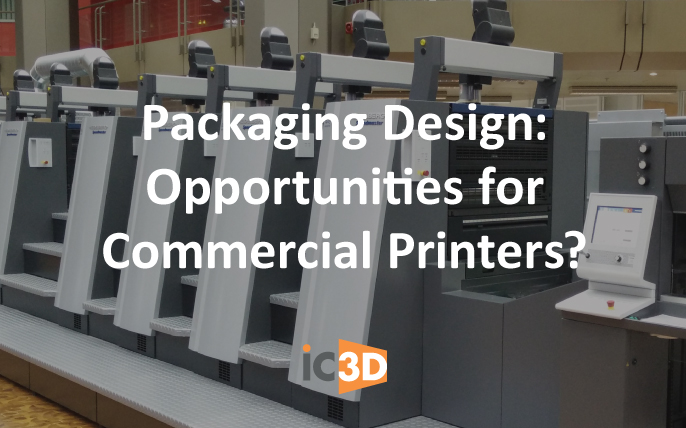I have been involved with the printing industry for over four decades. The smell of ink and paper still takes me back to my first apprenticeship in Naples, New York. My nostalgia fuels a desire to see printers succeed, even when the tide of digital and economic change is against them. Despite predicted growth in printed page volume, individual printing companies struggle to get ahead. This has prompted some to consider packaging design opportunities as a remedy.
Packaging to the Rescue?
Every printing analyst I know—including myself—is quick to point out that packaging is the most future-proof segment in the industry. One cannot wrap chocolates or car parts in an Internet display! As long as there are consumer products—even those sold online—there will be physical, printed packaging.
Savvy commercial printers know this, and have expanded their operations accordingly. Seattle-based Emerald City Graphics is an example. By acquiring expertise and equipment, plus existing presses, it entered the folding carton segment. This now constitutes about half their business.
Expanding into packaging is not a panacea, of course. But that’s not a reason to ignore the business potential of packaging design opportunities.
Eyes Wide Open
The first thing to remember is that packaging very often involves specialized equipment (and expertise) not common in a typical offset or digital print shop. These include flexographic plates and presses, specialized die-cutting, and finishing lines. Cost-cutting consumer product companies are even bringing such printing and converting equipment in house, which means you’re not only competing with packaging companies but with clients themselves.
Some segments are better opportunities than others. Printers can use mostly conventional equipment to produce folding cartons and labels. Flexible pouches, shrink packaging, or direct printing on cans or bottles is another matter. That means that traditional commercial printers must choose carefully.
Of course your staff will need to acquire new knowledge, notably in color management, finishing, and fulfillment logistics. Each of these areas of expertise is comparable to that of commercial or publication printing, but there is a learning curve.
The Service Model
Repurposing offset and digital presses (and adding selective finishing equipment) is only one approach to entering the packaging market. The other resembles the service bureau phenomenon of the 1980s and early 1990s. Just as typesetting firms and printers leveraged their design and production expertise to capture new DTP and CTP business, so too can commercial printers capture the loyalty of consumer product companies, using a mix of existing equipment and outside partners.
Most packaging designers today use Adobe Illustrator, which is good news. Handling outside AI files is second nature to an experienced prepress department. For some companies, the transition to becoming a full-blown design service is a logical step.
Service providers are ideal candidates to take the next step. They can render 2D designs as virtual prototypes, using iC3D from Creative Edge Software. While experienced packaging operations may have the initial advantage (based on familiarity with finishing and substrate behavior), any sheet-fed or web-offset commercial printer or could compete for these packaging design opportunities.
Following the initial design and prototyping in iC3D, a service-oriented printing company has several options. For folding carton or label work, the actual printing and finishing process is a modest step—as Emerald City Graphics and others have proven. For more complex printing and conversion, a commercial printer could outsource the work through a partner.
Perhaps the most compelling force behind such a business opportunity is cost. While iC3D is significantly less expensive than other, less capable systems, it may still be beyond the means of very small brand companies or design agencies—at least in the short term. However, like service bureaus, commercial printers can make such an investment. With it, they can serve the design and virtual prototyping needs of many small companies.
Opportunity knocks.






